The Ultimate SEO and Digital Marketing Resource Network
Skyrocket your SEO strategy with LinkGraph's expert resources. Browse our content to stay ahead of the curve, drive business growth, and crush your SEO goals.
Work with our Award-Winning SEO Strategists
Our team will reach out to you with insights on your site and strategies for how we can help increase your traffic and revenue.

What do you want to know?
 Blog Posts
Blog Posts
Link Building
- Train SEO Team Guide
- Benefits of Link Building in SEO
- How Content Marketing Enhances Link Building Strategies
- Long-Term Benefits of Ethical Link Building
- Potential Risks of Link Building Services
- Supercharge SEO with White Label Backlinks
- Link Building for SaaS Companies: 2023 Guide
- 12 Best Link Building Strategies for 2023
- Link Building Outreach: A Guide for Beginners
- Domain Rating vs. Domain Authority
- How to Get Permanent Backlinks to your Website
- Why Anchor Text Diversity is Good for your Backlink Profile
- White Hat Link Building Methods vs. Links to Avoid
- How To Choose The Right Link Building Package For Your Business
- How To Use A Backlink Generator For Your Website
- The Best Ways To Get Links From Guest Posts
- SEO Content Marketing
- How to Find Link Building Opportunities for your Business
- The Best Techniques For Obtaining Links From Other Websites
- Link Building Training Course
- The Best Link Building Tools For SEO
- What To Look For When Choosing A Link Building Service
- How To Use Tiered Link Building To Improve Your SEO
- How To Do Tier 2 Link Building The Right Way
- 16 Link Building Tips to Improve Landing Page SEO
- 7 Contextual Link-Building Tips & Techniques
- Link Exchanges: Do They Work & Are They Safe?
- Should Your Business Buy Backlinks?
- How To Choose the Best Quality Link Building Services
- How to Maximize the SEO Power of Links with Annotation Text
Technical SEO
- What Are Orphan Pages in SEO: Causes, Impacts, and Solutions
- The Google Indexing Coverage Report: Get your Web Pages into Google’s Index
- HTML Href Attribute Guide for Beginners
- Common Javascript SEO Issues and How to Fix Them
- A Guide to CSS File and How to Use Them for Better SEO
- What Is Duplicate Content in SEO and How to Fix It
- 7 Tips for Better Information Architecture on Your Website
- Noindex Nofollow and Disallow: Search Crawler Directives
- How to Whitelist the Search Atlas Site Crawler on Cloudflare
- The Most Important HTTP Status Codes for SEO
- Hreflang Tags: What They Are and When to Use Them
- A Complete Guide to Schema Markup
- A Guide to SEO HTML Tags
- How to Use Twitter Cards to Make Content More Clickable
- Open Graph Tags Implementation & Best Practices
- 301 Redirects for SEO & Common Redirect Issues
- How to Improve Website Performance for Better Rankings
- The Google Page Experience Update Guide
- What Is Crawl Budget & How to Optimize for It
- A Guide to HTTPS vs HTTP Protocols and More
- An Easy Guide: How to Create a Sitemap for Google
- What Are Canonical Tags and When to Use Them
SEO Software
- 8 Essential Tools for SEO Freelancers
- Keyword Tracking: How to Choose a Rank Tracking Software
- Ultimate SEO Toolkit: 10 Essential Tools For Digital Marketers
- A Guide to SEO Reporting Software for Clients
- Does Your Favorite SEO Tool Have Accurate SEO Rank Tracking?
- How to do SEO Copywriting with the SEO Content Assistant
- 4 Local SEO Tools to Boost Site Traffic and Foot Traffic
- 7 SEO Agency Tools to Accelerate your Client Growth Campaigns
- Powerful SEO Tools in Your Customer Dashboard
- 6 Brand-New (Free) SEO Tools to Take Advantage Of
- How to Spy On Your Competition with SEO Competitor Analysis Software
- 10 DIY SEO Software Tools & Tips for How to Use Them
- The Definitive Guide to Enterprise SEO Software
- 5 Ways to Use Content Writing Software to Write Articles Faster
- What Are The Best Backlink Generators On The Market?
Content Marketing
- A Guide to Creating SEO Content Briefs | Examples + Free Template
- What is a Content Manager and Should I Hire One?
- 14 Content Upgrades That’ll Skyrocket Your Lead Generation
- 5 of the Most Impactful SEO Content Marketing Moves to Improve your Organic Traffic
- Information Marketing: How to Share (and Sell) your Knowledge
- Content Development: Improve your Content Strategy for SEO
Keyword Research
- What to Do After Keyword Research: 5 Next Steps
- Holiday Music Search Rumble
- What Are Negative Keywords & How Should You Use Them?
- What is Keyword Difficulty & How Does It Affect Your SEO
- Long Tail Keywords
- Choosing Keywords for SEO: A 6-Step Guide
SEO Guides
- Jeweler SEO: 9 Ways to Get More Organic Traffic to your Jewelry Website
- Niche SEO: A Guide to SEO for Niche Markets
- WordPress SEO
- Retail SEO Guide: Get More Eyes On Your Online Store
- Law Firm SEO – A 20 Step Action Plan for Attorneys
- Voice Search Optimization: An Updated & Comprehensive Guide
- LinkGraph’s Guide to the Best SEO Strategies for B2B companies
- Mobile SEO – The Complete Guide 2022
- SEO for Ecommerce
- SEO Project Management: A Start to Finish Guide
- Essential Guide to SEO for Contractors
- 10 Small Business SEO Tips to Earn New Customers
- SEO for Photographers
- SEO for Nonprofits
- SEO for Insurance Agencies & Agents: The Basics & Beyond
- Yelp SEO: How to Improve Your Yelp Reviews
- Cannabis SEO: Best Practices for CBD/Marijuana Companies
- 14 SEO Tips for Accountants and Financial Advisors
- Essential SEO Tips for SaaS Companies to Rank Higher and Reach More Users
- Corporate SEO: Best Practices for Large Organizations and Brands
- 18 Real Estate SEO Tips to Generate Leads from Search
- Visual Search: The Next Wave of Search is Already Here
- Plumber SEO: A Straightforward Guide
- Simple SEO Steps for Doctors and Therapists
- 9 SEO Shopify Tips to Optimize Your E-commerce Website
- A Complete Guide to SEO for Startups
- SEO for Dentists
Local SEO
- What Are Citations in SEO? A Guide to Local Citations
- How to Rank in the Google Map Pack with LinkGraph’s Local SEO Guide
- How To Set Up Your Google Business Profile Listing
- The Importance of Local SEO
General SEO
- Mastering SEO and White Label Partnerships
- How Long Does SEO Take to See Results? The Final Answer.
- 30 Ways to Improve SEO Performance
- What Are Core Web Vitals? (+4 Tips for Improvement)
- How to Learn SEO: 11 Resources for Beginners and Intermediates
- How to Increase Online Sales During the Holidays with SEO
- Search Visibility Guide
- Celebrate the New Year with a New SEO Strategy for 2023
- BERT: Google’s Largest Update in Years
- 4 Cost-Effective SEO Strategies that You Can Implement Right Now
- Google Algorithm Update History
- Master the SERPs with these 10 SEO Skills
- Guide to the Relationship Between Organic CTR and SERP Position
- How to Increase Website Traffic: Direct, Organic, Paid & Referral
- SEO 101: Understanding the SEO Environment
- 10 Questions to Ask Before Hiring a Professional SEO Company
- SEO Checklist for Growing Your Site’s Search Rankings
- SEO Outsourcing Made Easy: A How-to Guide for Businesses
On-page SEO
- Everything You Need to Know on How to Buy Referral Traffic
- Topic Clusters and Pillar Pages: A Complete Guide
- What is Search Intent?: A Guide to Search Intent Optimization
- Image SEO
- Content Pruning Guide for Content Managers and SEOs
- SEO-Friendly Blog Posts: How and Why to Write Them
- 10 Tips for On Page SEO in 2022
- How to Write Alt Text for SEO & Accessibility
- Semantic SEO
- SEO for PDFs: Get your PDFs Ranking in the SERPs
- Understanding Google NLP Algorithms for Better Content SEO
- What is Google Author Authority?
- The Beginner’s Guide to Writing Web Content for SEO
- Outbound Links and SEO
- Content Length and SEO: Does it Really Matter?
- How to Achieve Optimal On-Page SEO – The 10 Definitive Factors
Public Relations
- How to Create a Future-Proof PR Plan (Template and Tool List!)
- 9 PR Strategies to Multiply Your Brand Presence
- How to Increase Brand Mentions with Digital PR Tools
- How To Measure The Success Of Your Digital PR Campaign
- The Most Effective Ways To Reach Out To Journalists And Bloggers
- Tips For Running A Digital Pr Campaign
- The Power of Digital PR in SEO
Advanced SEO
Marketing Basics
- 5 Best Omnichannel Marketing Tips to Increase Your Business Sales
- Corporate Reputation Management for Enterprise Brands [2021 Guide]
- Targeted Email Marketing 101: A Beginner’s Guide
- 5 Tips to Elevate your Online Reputation Management Strategy
- GPT-3: The 5 Things SEOs & Digital Marketers Need to Know
- How to Build your Brand Online in 3 Months or Less
SEO Reporting & Analytics
- Measure SEO
- How to Use Google Search Console for SEO Best Results
PPC Advertising
Content Strategy
- Mastering SEO Content Writing Skills
- Top Funnel SEO Content Strategies
- LinkGraph: Mastering Bulletproof SEO Content Strategies
- Tackling SEO Challenges: Thin Content
- Syndicating Content Without SEO Mishaps
- Ultimate SEO Content Checklist
- Types of Content for SEO
- SEO vs Content Marketing
- SEO Value Content: Unlocking Success
- SEO Topic-Driven Content: A Strategic Approach
- SEO Content Links
- SEO Content Writing
- SEO Content Tips
- SEO Content Marketing Trends Recap
- SEO Content Readability
 Case Studies
Case Studies
- Laser Hair Removal Company Skyrockets
- Ecommerce traffic soars with technical SEO campaign
- Ecommerce retailer doubles organic traffic in 3 months
- Luxury home interior company skyrockets organic traffic
- Restaurant equipment supplier escalates organic traffic with keywords and backlinks
- Law firm outperforms competitors and increases traffic by 84% in just 5 months with effective SEO strategies
- Personal injury law firm increases organic traffic 186% in just one year with LinkGraph’s SEO strategy.
- Delta 8 Seller Multiplies Organic Traffic and Becomes One of the Most Competitive in the Market
- B2B Enterprise Security Companies Skyrockets From a Newcomer to a Multi-Billion Dollar IPO
- Anime Figures Business Skyrockets Organic Traffic with Keyword Research and Link Building
- Transforming a wellness provider online presence with strategic SEO
- New online casino website goes from 0 organic traffic to over 1.57 million clicks and 7.8 million impressions in a highly competitive industry!
- Rehab Facility’s SEO Campaign Achieves Unbelievable Results and Continues Driving Even More Results
 eBooks
eBooks
- LinkGraph’s Guide to Paid Media – Part I
- LinkGraph’s Guide to Link Building
- LinkGraph Negative SEO Services: How to Combat a Negative SEO Attack
- SEO On-Page Content Optimization Guide
 Webinars
Webinars
- Mastering Link Building: Exploring Strategies, Google Patents, and Using HARO | Webinar
- How to Maximize Your Agency’s ROI with White Label SEO Services | Webinar
- AI and SEO Software: Tips, Trends, and Tactics | Webinar
- SEO Content Strategy: How to Work SMARTER When Content Planning | Webinar
- Boost Your Small Business Growth with SEO | Webinar
- Boost Customer Retention: The Ultimate Guide to Reducing Churn through Customer Experience
- Facebook Ads: Wizard’s Toolkit Expert Tactics Revealed
- Why Your Content Is Hurting Your Website’s SEO
- How to Generate High Quality Leads with Google Ads
- Search Atlas Software Suite Updates 2022 – The Best SEO Platform
- How to SEO Optimize Your Content
 Videos
Videos
SEO Tutorials And Tips
- How to Publish 100+ SEO-optimized articles per day using Search Atlas Bulk AI Content Generation
- How to Build a Topical Map in SearchAtlas to boost Topical Authority
- How to use the “Write With AI” Workflow in SearchAtlas
- How to use SearchAtlas to Create NLP/Entity Optimized Content and Instantly Publish to WordPress
- How to Use the SearchAtlas Site Auditor | Tutorial
- Keyword Research for Landing Pages – SearchAtlas SOP
- How To Use The Report Builder | SearchAtlas
- How To Create a Local SEO Report | SearchAtlas
- OTTO- SEO AI by SearchAtlas
- How To Use The Site Explorer In SearchAtlas
- How To Setup a Local Heatmap in SearchAtlas
- How to Use the Keyword Gap Tool in SearchAtlas
- Perform a Backlink Gap Analysis using SearchAtlas
- How to Use the Content Planner in SearchAtlas
- How to Use the On-Page Audit Tool in SearchAtlas
- Full SearchAtlas SEO Software Suite Walkthrough
- SearchAtlas SEO Content Assistant
- How Is The COVID Shutdown Impacting SEO and Digital Marketing
- SEO Case Study Auto Auction Mall
- SEO Case Study – BrightPattern
- How To SEO Optimize Your Content | A LinkGraph Webinar
- Negative SEO Attacks with Manick Bhan
- White Label SEO Services at LinkGraph
- Enterprise SEO Services | LinkGraph
- How to Research Your Competitors’ SEO Strategy
- How to Generate 6 Months of Content (In One Day)
- How to Create a Content Calendar for SEO | Search Atlas Tutorial
- How to do an OnPage SEO Audit | Search Atlas Tutorial
- How to do Keyword and SERP Analysis for SEO | Search Atlas Tutorial
- How to Use AI to Create SEO Content Faster | Search Atlas Tutorial
- How to Track SEO Campaigns with GSC Insights | Search Atlas Tutorial
- How to Create an SEO Report for Clients (in Under 30 Seconds) | Search Atlas Tutorial
Expert Tips
- Link Building 101 with Manick Bhan
- Google Ads/PPC
- Facebook Advertising
- Retargeting/Remarketing
- Reputation Management
- Negative SEO Attacks with Manick Bhan
Services
- White Label SEO Services at LinkGraph
- Enterprise SEO Services | LinkGraph
Case Studies
- SEO Case Study Auto Auction Mall
- SEO Case Study – BrightPattern
- Home

- Blog

- Public Relations

- How to Create a Future-Proof PR Plan (Template and Tool List!)
How to Create a Future-Proof PR Plan (Template and Tool List!)
By The LinkGraph Team on Apr 28, 2023 - 13 minute read
Discover how to create a future-proof PR plan. Use this detailed PR plan template and helpful tools list for PR teams.
Guest Post by Jeremy Moser
You just onboarded a new public relations client whose brand you truly believe in. Not only does this brand fit your ideal client profile, but it also has concrete plans to scale. The problem? The director wants a future-proof PR plan, stat.
They’re ready to get the word out about their new product launches and store openings and expect a plan by the end of the week. They’re looking to you to create a PR plan that’ll attract influencers, media reps, and customers who can help spread the word about their new venture — and if you can’t do that, they’ll look for someone who can.
Enter: The importance of a future-proof PR plan template.
When you’re pressed for time, you need a template to help you get your strategy together. If you’ve come across this article, chances are you don’t have one ready, and you’d like that to change.
The good news? After today, you’ll never be stuck wondering how to put together a future-proof PR plan quickly and effectively ever again.
So, bookmark this guide in your web browser, print it out, or make a copy and edit it to fit your needs.
And if you want to skip ahead, here’s the exact process you’ll need to create your PR strategy (plus some helpful tools) for any new client you may onboard now or in the future:
Future-Proof PR Plan Template Overview 📜
Outline who you’re trying to reach
Highlight your top PR goals
Conduct research for a deeper understanding
Define the key messages you want to communicate
Choose appropriate channels and mediums
Set specific objectives and plan your PR timeline
Solidify the types of content you’re going to use
Measure your results
🧰 Helpful PR tools and platforms
Respona: A communication tool to keep in touch with and respond to people you’ve engaged with
Critical Mention: A media monitoring tool for news, radio, TV, podcasts, and social media
MuckRack: A media relations tool to help pinpoint specific media journalists invested in your industry
HARO and Terkel: Journalist communication tools for backlinking
Cision: A media relationship management tool to help monitor your online presence and review advanced PR analytics and reports
PRWeb: A distribution network to help you manage and structure your press release distribution
Search Atlas SEO Content Assistant: A comprehensive and user-friendly SEO platform for optimizing press releases.
Meltwater: A media monitoring tool to help you follow media coverage across nearly 300,000 news sources
Grammarly and Writer.com: Proofreading tools to edit your press releases, value-driven statements, and content marketing assets
LinkedIn: A networking tool to help you connect with industry professionals.
1. Outline who you’re trying to reach
Who is your new client trying to reach? What are their dream connections, and would these connections feel aligned with their new venture? Why or why not?
In step one, be ultra-specific about who your upcoming PR strategy needs to attract.
Consider relevant influencers, media reps, and target customers that are in alignment.
For instance, if your client is looking to scale their storefronts across multiple states, make sure to get a firm grasp on each of their target audiences and corresponding segments.
For example, that could be:
- Single parents and caregivers in New York City
- New parents and caregivers in Miami, Florida
- New parents and caregivers on a limited budget in Dallas, Texas
- Parents and caregivers in Austin, Texas, who take care of Autistic children
Be sure to research additional influencers, affiliate marketers, journalists, and other public figures your client hasn’t outlined yet to help you advance your messages. More on messaging in a bit!
2. Highlight your top PR goals
Your client wants to attract influencers, media reps, and customers who can help spread the word about their new venture — great! That’s goal number one.
What other top PR goals are they looking to meet? Grab your planning team and meet with your new client to get into the nuts and bolts of their expectations.
Before going into the meeting, consider creating a framework to help you conduct a more intentional meeting.
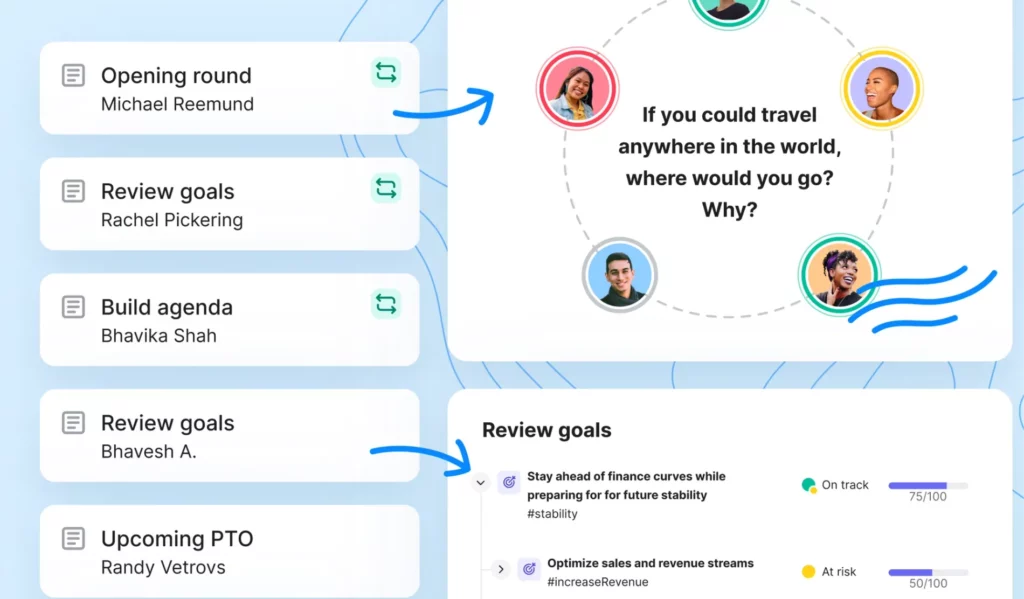
For instance, Robert’s Rules of Order framework was designed to help board directors conduct orderly, systematic, and goal-oriented meetings. You can follow this particular framework or consider previous meetings you’ve had and focus on carrying over the aspects that worked well.
For example, maybe in previous meetings, your clients found your goal creator slide deck helpful, or maybe you created a template that helped them refine their goals in three steps.
Whatever the case may be, go into the meeting with a plan and make sure you leave with a clear understanding of their top PR goals.
3. Conduct research for a deeper understanding
Now that you’re clear on your client’s goals, conduct research to understand their industry, target audience, and growth goals in a profound way.
Deepening your understanding is crucial to making wise decisions your clients can depend on.
For instance, consider calculating lead scoring points to determine which influencers, reps, and customers have the best chance of converting. Then, take a look at which specific publications love to publish content and press releases relevant to your client’s niche and growth vision.
Both of these strategies can help you put your eggs in the right baskets, so you don’t waste valuable outreach time on leads and media outlets that are misaligned.
This is also a crucial time to use analytics to conduct a deep-dive business review of the brand you’re advocating for. Who are they really? Why should the public care? Why do you care to help them advance their goal? Who are their competitors? What do their current customers think about them?
Believing in your client and knowing how they can impact the world for the better can not only help motivate you to keep pushing, but it can also help you focus your messages on what matters most.
And speaking of focusing your messages …
4. Define the key messages you want to communicate
What key messages do you want to communicate on behalf of the brand you’re representing?
Are they launching a new green initiative the world has to know about? Will they be introducing new self-service options their customers have been asking about? Are they revolutionizing the cybersecurity landscape? Did customer feedback drive new product innovation?
Hone in on the details and craft short, compelling pitches and value-driven statements that define the key messages you want to communicate.
Here’s an example of PR efforts:
“Virtual Reality brand NextChance just dropped their latest invention of virtual reality headsets to an economical rate of just $99, a whopping 90% drop in price compared to its previous A1 and A2 models. The discount expires in 48 hours, after which the price will increase to $249, which will stay until the next model launches. Tune into the NextChance podcast today at 11 am for more details!”
5. Choose appropriate channels and mediums to communicate your messages
Review the research you conducted prior and narrow down the channels and mediums that would be the most effective at helping you communicate your messages.
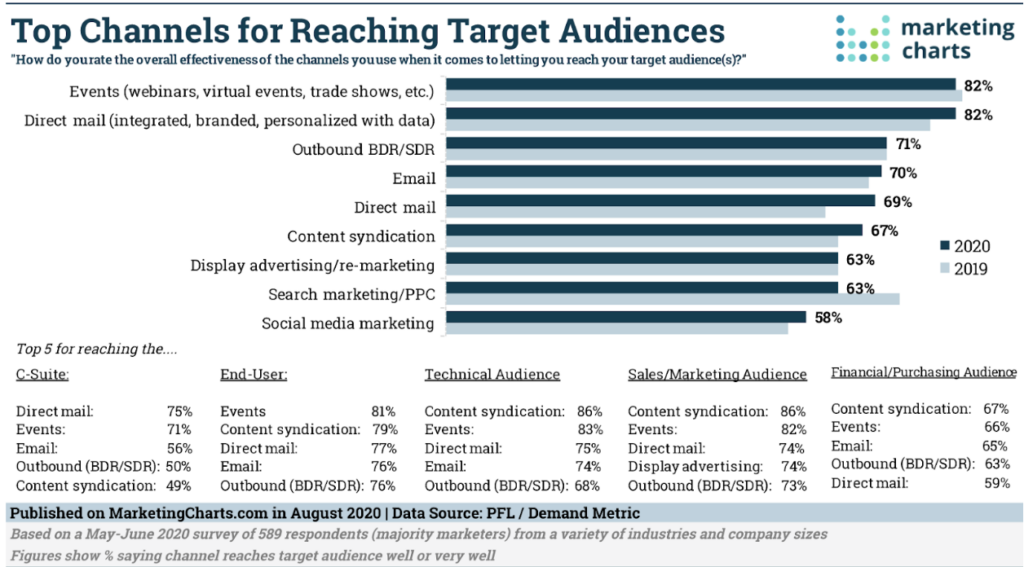
For instance, if your client serves a B2B audience, then you might discover that LinkedIn, Twitter, industry-related conferences, podcasts, PPC , and guest posting on high authority sites are your best chances at communicating successfully.
6. Set specific objectives and plan your PR timeline
What’s your end goal for each channel and medium?
Once you’ve narrowed down your channels and mediums, make sure to set specific objectives for each one. Then plan a detailed PR timeline to help you meet your objectives.
Start with the end in mind and then craft milestone goals to help you tackle your long-term vision in digestible chunks.
Here’s a quick example:
Specific objectives per channel/medium:
- Guest posting: Build authoritative backlinks that raise domain authority to DR60 or higher
- LinkedIn: Build meaningful relationships and connections with industry peers
- PPC: Drive 10% more sales using PPC ads alone by the end of Q3
Timeline milestone goals per channel/medium:
- Guest posting: Secure 10 guest posts for month one, 20 guest posts for month two, and 30 guest posts for month three
- LinkedIn: Send 15 connection invitations to relevant industry peers Monday through Friday, every week
- PPC: Hire a renowned copywriter to conduct A/B testing and write high-conversion copy in batches each month
7. Solidify the types of content you’re going to use
What types of content assets will you create to help you meet your objectives for each channel?
Aside from using the latest AI for content creation, investing in a solid content writing team with subject-matter expertise is also a great idea. AI tools can be helpful for light editing, plagiarism checks, brainstorming, and topic ideation, while subject-matter experts can give your content the depth and human touch it needs.
When contemplating the types of content you’ll be creating, consider who you want to reach with your content, your objectives, and the medium or channel you’re using. You want each asset to feel native to the platform you’re promoting it on and have a clear goal or reason for publication.
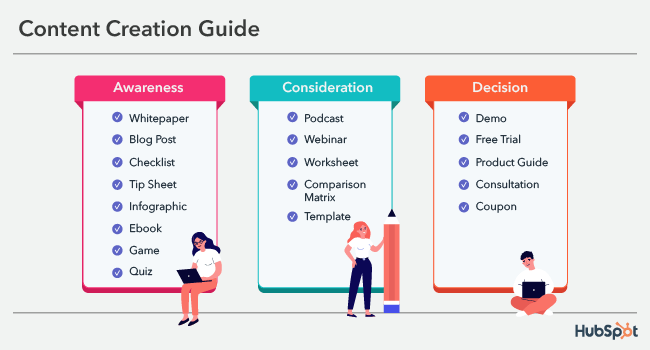
For instance, sharing thought leadership content and industry-related tips works great on LinkedIn. And producing content based on search intent is a strategy you can always count on when guest posting.
So, grab your channel/medium list, and note the content assets you’ll be producing for each one according to your unique objectives.
8. Measure your results
As you work through your public relations timeline, analyze and measure your results and course-correct when needed.
Keep your client updated as your timeline progresses, and be sure to note any wins you experience — big or small.
If you notice anything in your PR plan that could set the timeline back, strategize solutions, and notify your client as soon as possible. Make sure they know you have a plan in place to get the timeline back on track.
As you notice initiatives that are working, invest more time and content assets in nurturing those tactics and reduce time spent on efforts that aren’t producing results. Just remember that some initiatives may require ongoing, consistent action before you’ll see the results you’re looking for.
Be sure to also set realistic time constraints and revisit client expectations if needed.
Helpful PR tools and platforms
Did you make it through the PR plan template? Congratulations! You’re on your way to making big things happen for your new client and boosting brand awareness.
Need an extra leg up on your public relations strategy before you go? Here are some PR tools and media channels you might find helpful:
Respona
Use Respona to stay in touch with and respond to the people you’ve engaged with on your PR campaigns.
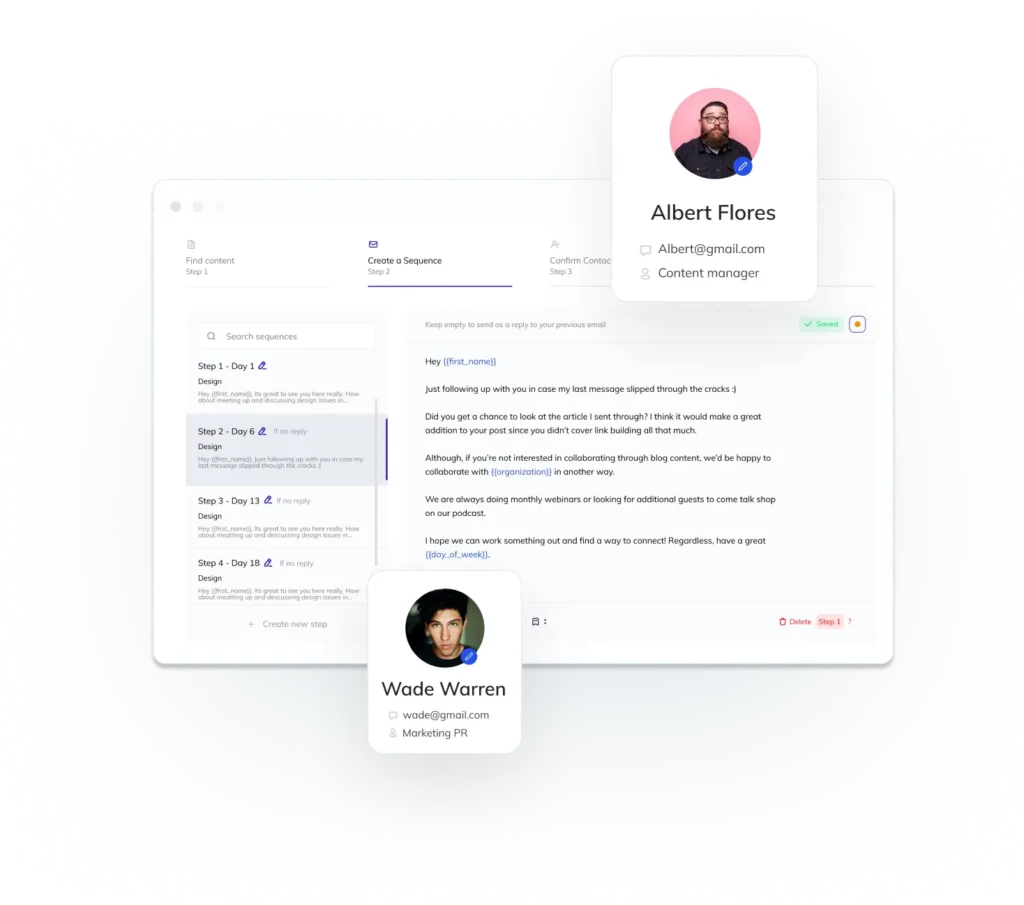
Critical Mention
Use Critical Mention to monitor news and current events via news outlets, radio, TV, podcasts, and social media.
MuckRack
Use MuckRack to help you pinpoint specific media journalists invested in your client’s industry. The goal is to build media relationships with these thought leaders.
HARO and Terkel
Use a combination of HARO (Help A Reporter Out) and Terkal to respond to journalists’ requests for a chance to score authoritative backlinks and up your media strategy game.
Cision
Monitor your online presence and review advanced PR analytics and reports with Cision, a media relationship management tool. Understand if you are meeting your business goals.
PRWeb
Use the distribution network PRWeb to help manage and structure your press release distribution.
Search Atlas SEO Content Assistant
The Search Atlas content optimizer is a powerful tool that can help you create press releases that rank.
It provides valuable insights on relevant keywords and actionable recommendations to optimize your content, enabling you to create top-notch SEO content in a fraction of the time.
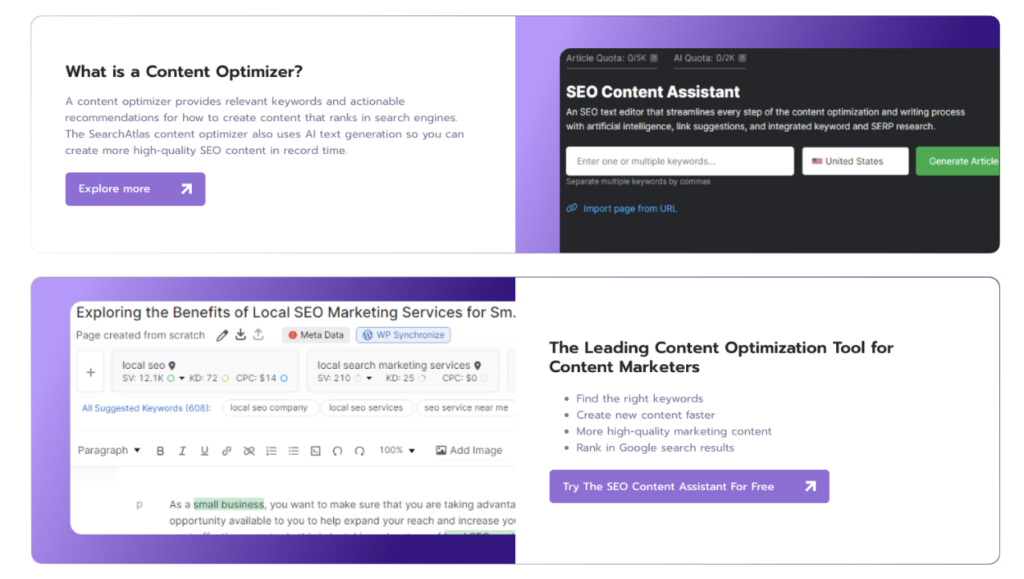
Meltwater
Follow media coverage across nearly 300,000 news sources with Meltwater, a media monitoring tool.
Grammarly and Writer.com
Proofread your press releases, value-driven statements, and thought leader assets with Grammarly and Writer.com. Use the plagiarism checker to ensure your content is 100% authentic and the readability checker to make sure your copy is suitable for the average reader.
LinkedIn
Use LinkedIn to connect with industry professionals in your client’s niche. For your own career development, build long-term relationships and create a mutual value exchange with media reps, public figures, and influencers.
Wrap up
You officially have everything you need to launch your new future-proof PR strategy.
Call your new client back and let them know you have a treat in store for them — you made the deadline in time! 😉
Here’s to your success!
About the Author
Jeremy Moser is co-founder & CEO at uSERP , a digital PR and SEO agency working with brands like Monday, ActiveCampaign, Hotjar, and more. He also buys and builds SaaS companies like Wordable.io and writes for publications like Entrepreneur and Search Engine Journal.



 Blog Posts
Blog Posts Case Studies
Case Studies eBooks
eBooks Webinars
Webinars Videos
Videos






